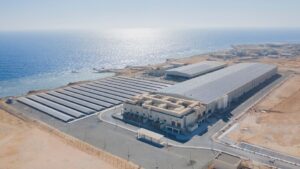When you look at causality between Carbon in the atmosphere climbing rapidly since the industrial revolution and seemingly going over the top of the ‘carbon budget’ (the point at which global warming and climate change become uncontrollable), there has to be a way to make the production of energy more efficient vs amount of produced atmospheric Carbon.
The search for a more efficient combustion engine has been since the many trials and failed engines invented by Rudolf Diesel. The world owes much to Dr Diesel for getting us started with what must be one of the most prolific work engines used throughout the world today. Recently there has been work done to improve the engine to take alternate forms of black liquid fuel.
I like the term ‘CO2 Intensity’ which is an end to end ratio ‘Mass of CO2 emitted’/’Energy Delivered to End User’. This term is useful in the overall discussion relating to technical improvements such as discussed below.
The Direct Injection Carbon Engine (DICE) is a subject of research at the CSIRO in Australia. The research organisation is motivated to find ways to be able to generate energy from Coal with a greater Carbon budget efficiency.
- Pulverised Fuel Plants make too much CO2 compared to Gas Fired
- Large power stations need available lakes for cooling water
- Carbon Capture and Storage is being downplayed
- The modern grid needs more flexible generation options other than base load plants
The article claims that DICE technology can address all of these above drivers at a 30-50% reduced CO2 Intensity.
So what is DICE ? Put simply DICE is taking either Black Coal or Brown Coal and making a Micronised Refined Coal [MRC] slurry as a liquid fuel and direct injecting into a diesel engine generator.
The article cites a number of technological issues which might be of interest…
- MRC production cost – significantly reduced due to better milling processes
- Atomizer Nozzle Wear – reduced by the use of diamond nozzles and lower engine speeds
- Ring Jamming
- Abrasive Wear
- Ignition/Ignition Delay
- Ash Fouling
Low speed 4 stroke engines are important at the moment to help resolve some of the technological issues. Engine sizes of up to at least 55MW have been tested.
It looks as if making a good quality engine for MRC is going to have benefits for Natural Bitumen Water fuels as well.
DICE has an interested group of companies pursuing the better resolution of the technical issues and the article concludes that the ‘Diesel’ engine combined with the low cost and high availability of coal provides an innovation that could increase provide significant benefits to the supply of flexible Generation with a reduced Carbon Intensity.
I like the idea since it looks as if Rudolf Diesels engine – one of the most flexible and understood engines on the planet – could play a new role in helping to improve Earth’s energy efficiency by reducing the Carbon Intensity for burning fossil based fuels like coal and bitumen.
References
‘DICE – The Only Option Left for Coal ?’ – Louis J Wibberley, CSIRO – Energy Generation Jan/Mar 2014.
‘DICEnet Organisation’ CO2 Intensity Comparison


